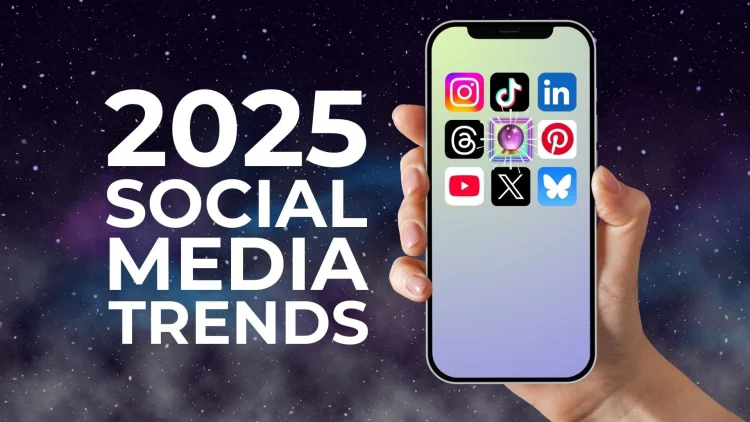Abstract
In the last two decades, social media has evolved from a digital communication tool into a defining cultural force. Viral trends—ranging from hashtags and memes to challenges and influencer-driven content—now shape identity formation, political mobilization, and popular culture. This article examines the multifaceted impact of social media trends, exploring how they influence individual and collective identity, reshape political landscapes, and transform global cultural production. By analyzing case studies from different regions and platforms, the study underscores both the opportunities and risks of a world increasingly defined by virality.
Introduction
Social media platforms such as Facebook, Twitter (X), Instagram, TikTok, and YouTube have not only connected billions of people but also created an ecosystem where trends emerge, spread, and disappear with astonishing speed. These viral phenomena influence how individuals perceive themselves, engage in politics, and participate in cultural life.
The phrase “viral culture” captures this dynamic: digital content spreads like a virus, replicating across networks, transforming identities, shaping political debates, and generating cultural movements. The following sections analyze these dynamics through the lenses of identity, politics, and popular culture.
I. Social Media Trends and Identity
1. Personal Branding in the Age of Virality
- Individuals curate online personas through participation in trends.
- Viral challenges, fashion aesthetics (e.g., “cottagecore” or “dark academia”), and meme cultures allow users to signal belonging to communities.
- Platforms like TikTok algorithmically reward content that conforms to or innovates within a trend, incentivizing users to adopt “performative identities.”
2. Collective Identity and Communities
- Hashtag communities such as #BlackLivesMatter, #MeToo, or fandom groups illustrate how trends build collective identities.
- Shared participation fosters a sense of belonging that transcends geography, often blending online and offline identities.
3. Risks of Identity Shaping
- Social media trends may also foster conformity, encouraging homogenized aesthetics and groupthink.
- Viral shaming or “cancel culture” highlights the dangers of collective identity enforcement.
II. Social Media Trends and Politics
1. Hashtag Activism
- Social media trends amplify political causes at unprecedented speed.
- Case study: #ArabSpring (2011): Social media enabled rapid mobilization and global visibility.
- Case study: #MeToo (2017): A viral trend that reshaped global conversations about gender, power, and accountability.
2. Populism and Political Branding
- Leaders use viral strategies to bypass traditional media filters.
- Example: Donald Trump’s use of Twitter as a tool for direct political communication.
- Example: Narendra Modi’s use of WhatsApp and Twitter to mobilize millions in India.
3. Disinformation and Manipulation
- Virality is a double-edged sword. False narratives spread just as quickly as truthful ones.
- Example: Disinformation campaigns during elections (e.g., 2016 U.S. presidential election, Brexit referendum).
- Memetic warfare demonstrates how political actors weaponize viral content.

III. Social Media Trends and Popular Culture
1. Music and Entertainment
- Platforms like TikTok redefine the music industry, where short viral clips can propel unknown artists to stardom.
- Example: Lil Nas X’s Old Town Road became a global hit largely due to TikTok trends.
2. Fashion and Aesthetics
- Viral aesthetics spread across Instagram and TikTok, reshaping global consumption patterns.
- Micro-trends emerge and disappear within weeks, challenging traditional fashion cycles.
3. Global Cultural Exchange
- Memes, dances, and challenges cross borders instantly, creating hybrid cultural forms.
- K-pop’s virality illustrates how localized cultural products can achieve global dominance.
4. Commodification of Trends
- Brands harness viral cultures for marketing (e.g., Wendy’s witty Twitter persona, Duolingo’s TikTok strategy).
- Virality transforms culture into a commodity, where attention is monetized.
IV. Case Studies
Case Study 1: The Ice Bucket Challenge (2014)
- A viral campaign that raised over $220 million globally for ALS research.
- Demonstrated how social media trends can merge entertainment with philanthropy.
Case Study 2: TikTok and Political Satire (2020)
- During the U.S. elections, TikTok users booked seats at Trump rallies as a form of protest, blending humor, politics, and digital activism.
Case Study 3: K-pop Fandom Activism
- K-pop fans have hijacked racist hashtags by flooding them with fancams, showing the power of fan communities to intervene in global politics.
V. Critical Reflections
The Acceleration of Culture
- Trends rise and fall so quickly that cultural memory becomes fragmented.
- What was viral yesterday may be forgotten tomorrow, raising questions about sustainability of meaning.
Mental Health Implications
- Virality pressures individuals to seek validation through likes and shares.
- Participation in trends can foster creativity but also heighten anxiety and self-comparison.
The Democratization vs. Commercialization Dilemma
- While virality democratizes content creation, it simultaneously enriches platform corporations that profit from attention economies.
Conclusion
Social media trends are not trivial distractions—they are powerful cultural forces shaping identity, politics, and popular culture. Virality has democratized participation, but also raised profound ethical, social, and political challenges. As digital life continues to expand, understanding viral cultures becomes essential for navigating the 21st century.
The study concludes that viral cultures embody both the promise and peril of our interconnected digital age. They empower individuals and communities to shape narratives, yet they also risk fostering homogenization, disinformation, and commercial exploitation. Future research and policy must balance the creative potential of virality with safeguards against its excesses.
















































